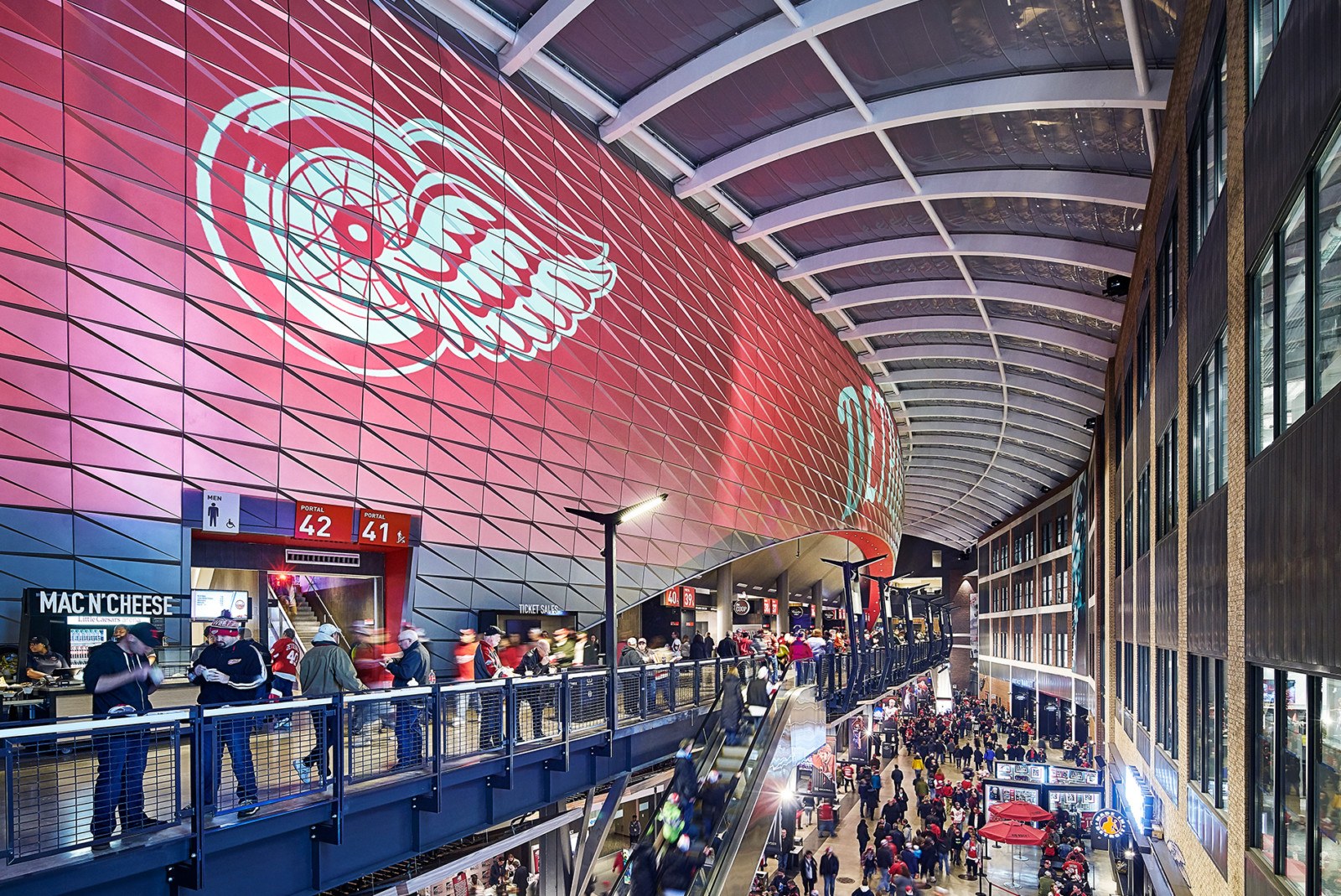From Detroit to Columbus, HOK-designed sports facilities and adjacent districts are catalyzing growth in urban cores.
The New York Times explored the impact of downtown arena and stadium project investments and the role they play in bringing development and revenue to cities across America. The article identifies three HOK projects—Nationwide Arena and the Arena District in Columbus, Ohio; Little Caesars Arena and The District Detroit in Detroit; and Sprint Center and the Power & Light District in Kansas City, Missouri—as role models for future sports-anchored developments across the country.
Excerpted from The New York Times:
Across the country, in more than a dozen cities, downtowns are being remade as developers abandon the suburbs to combine new sports arenas with mixed-used residential, retail and office space back in the city. The new projects are altering the financial formula for building stadiums and arenas by surrounding them not with mostly idle parking lots in suburban expanses, but with revenue-producing stores, offices and residences capable of servicing the public debt used to help build these venues.
In Columbus, Nationwide Realty Investors has constructed the 75-acre, $1 billion Arena District, with an N.H.L. arena (home to the Blue Jackets), surrounded by 1,030 apartments, 2 million square feet of commercial space for 80 businesses, a minor-league baseball stadium, restaurants and stores. And in Detroit, the $863-million, 19,500-seat Little Caesar’s Arena, home to both the Pistons and the Red Wings, opened last summer in amid the 50-block District Detroit, a $1.2 billion mixed-use neighborhood.
If there is particularly good model for what’s happening…it can probably be found in Kansas City and the city’s Power and Light District. The $1 billion, 12-block district features a 150,000-square-foot covered plaza, more than 50 restaurants and taverns and hundreds of market-rate apartments. It opened in 2007 next to the city’s publicly financed $263 million, 18,500-seat Sprint Center, which, though it does not host a professional team, has been frequently used as a site for college basketball games, including regional rounds of the annual NCAA tournament.
A decade later, the Power and Light District…is credited with being a leader in sports-focused mixed-use development… and is cited by city officials as the primary reason that a 2.5-mile, $102 million downtown streetcar line in the city center started in 2016. Thousands of new apartments opened, the downtown population increased to 30,000 from 8,000, and city tax revenue soared.
